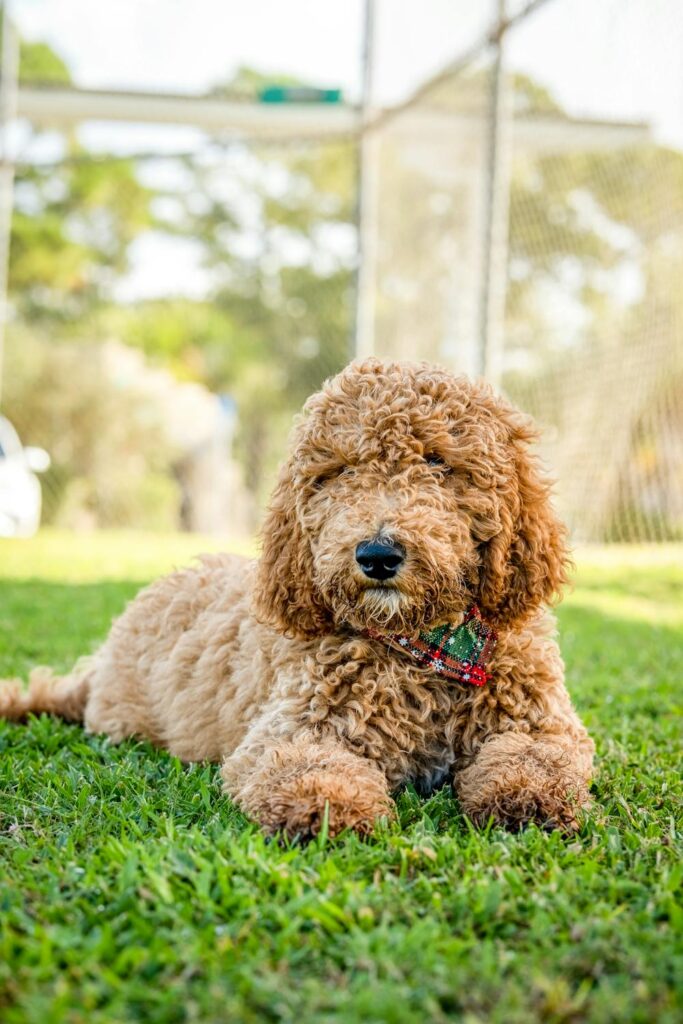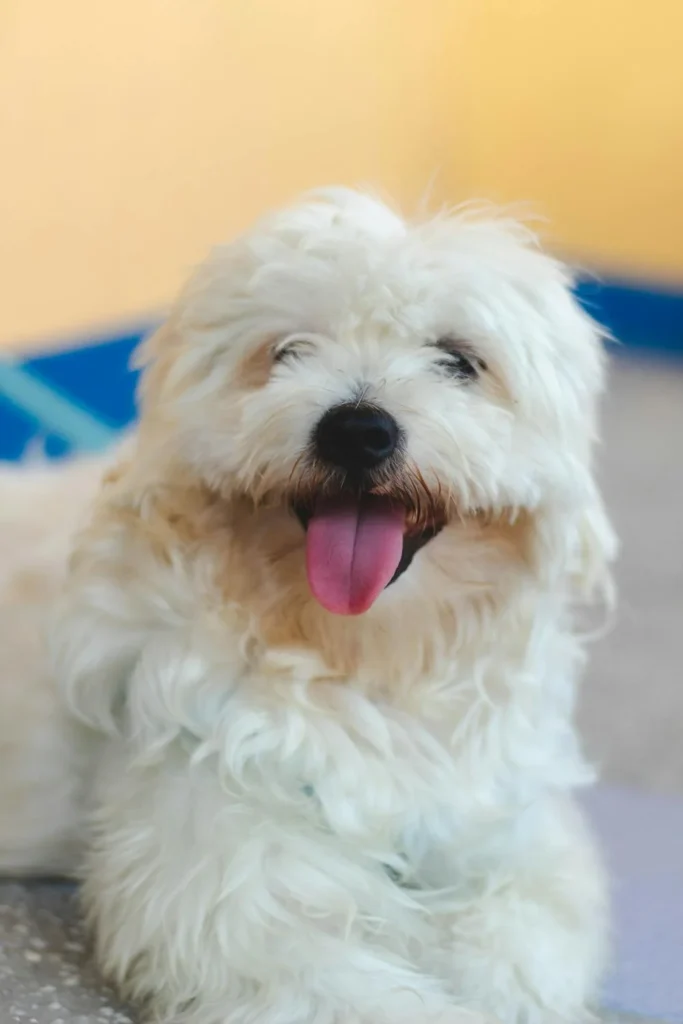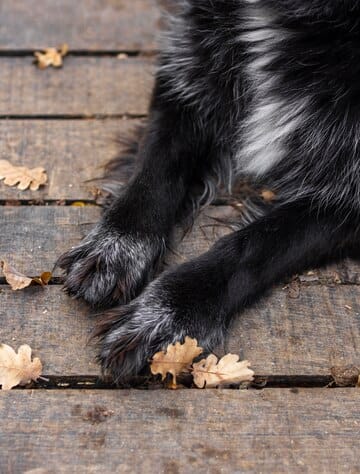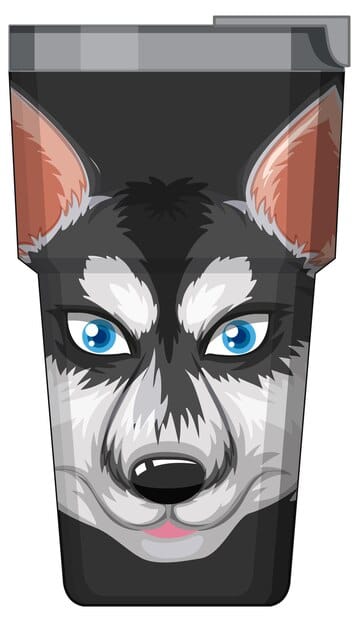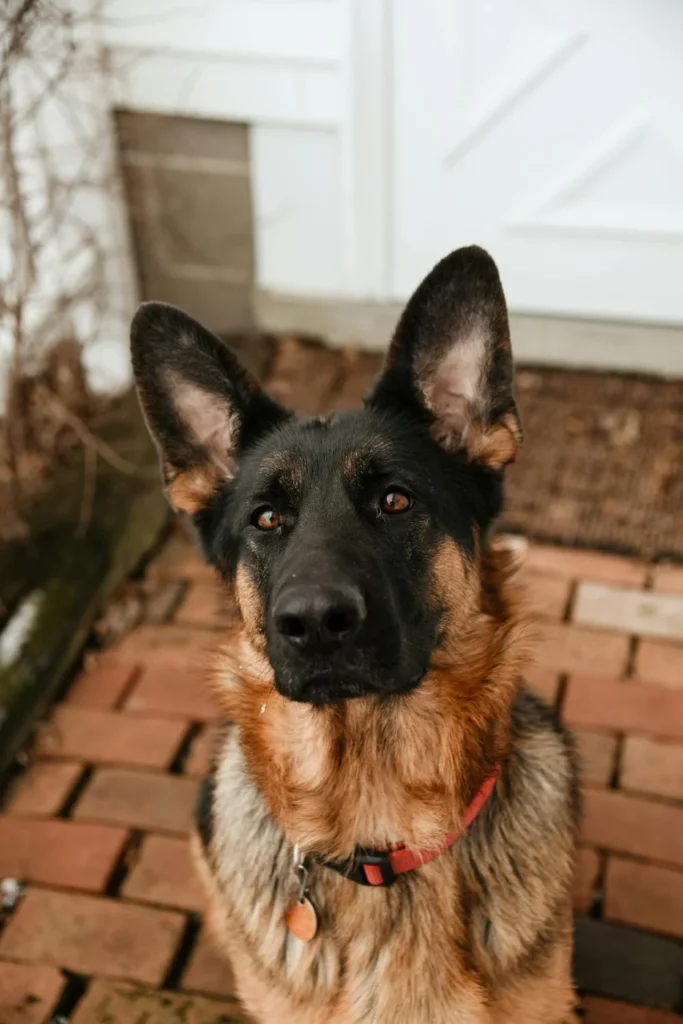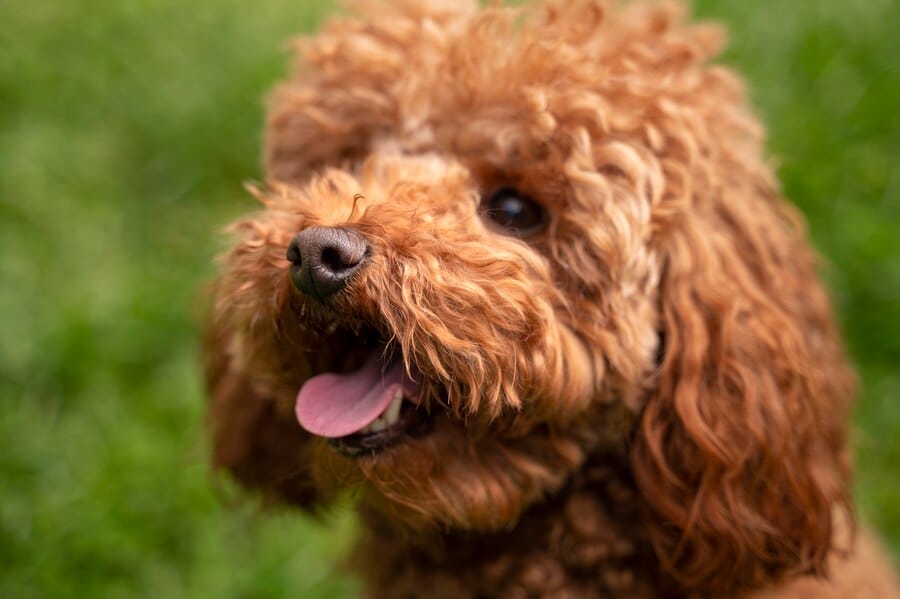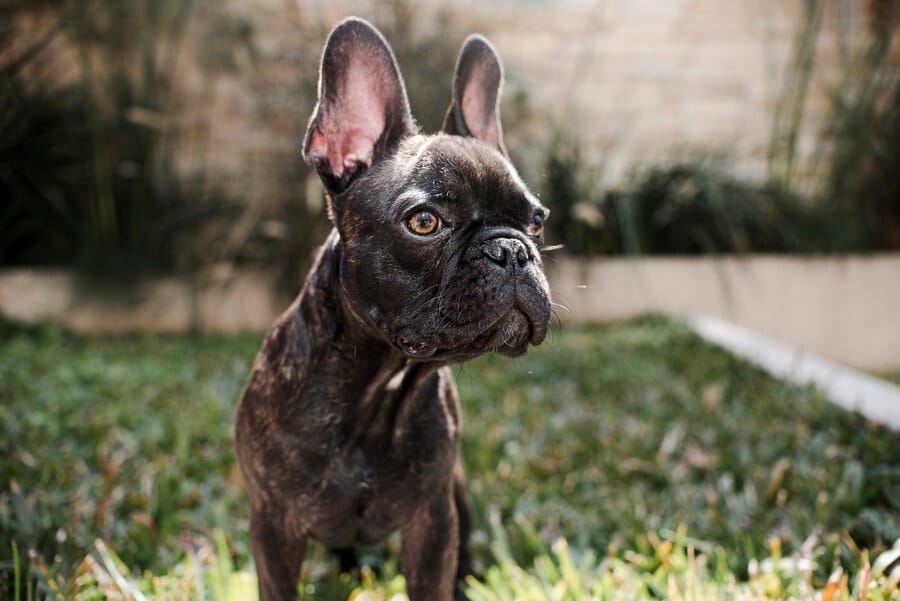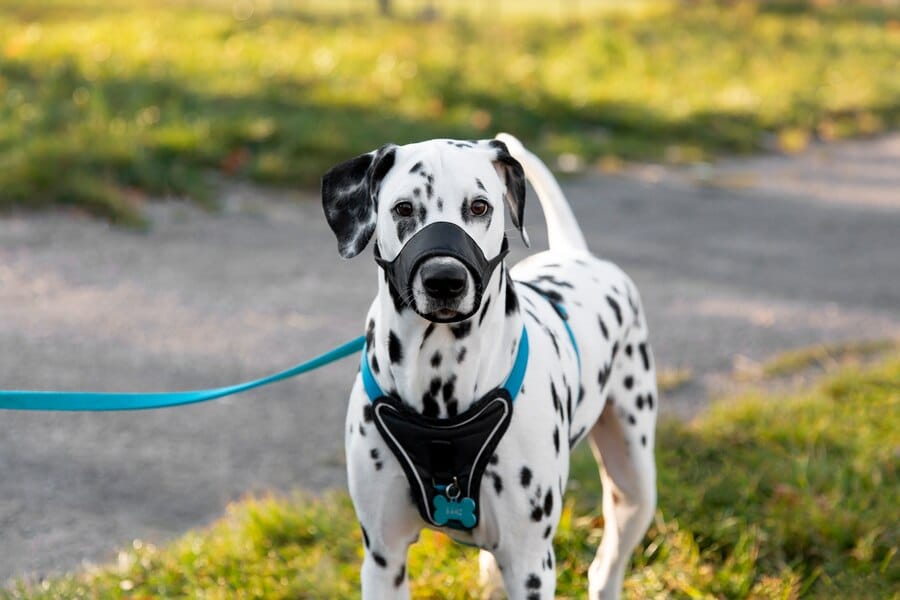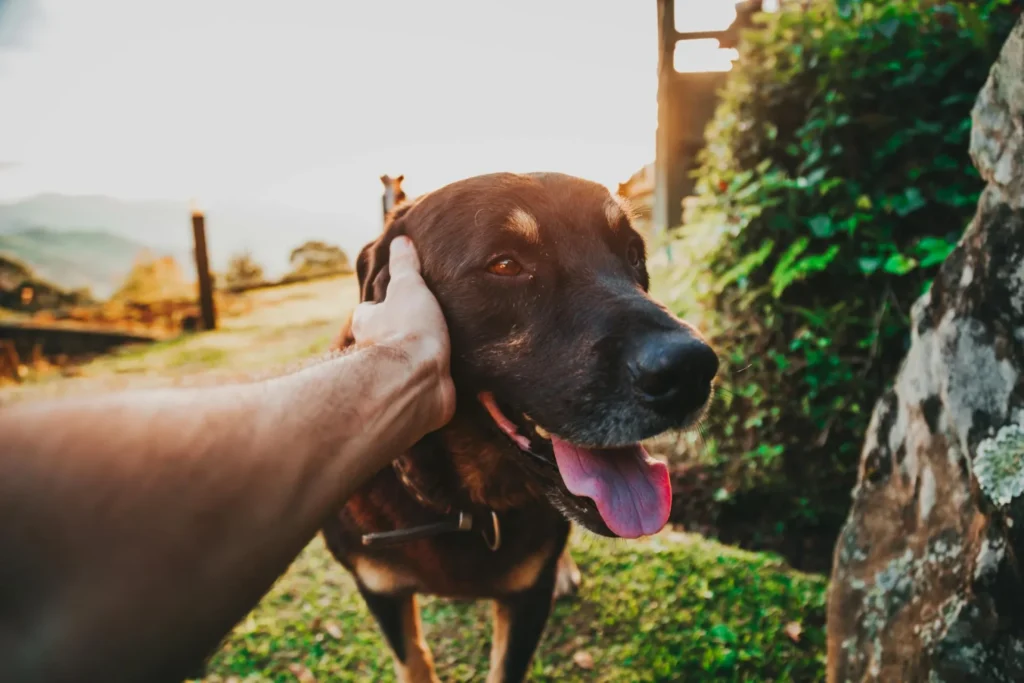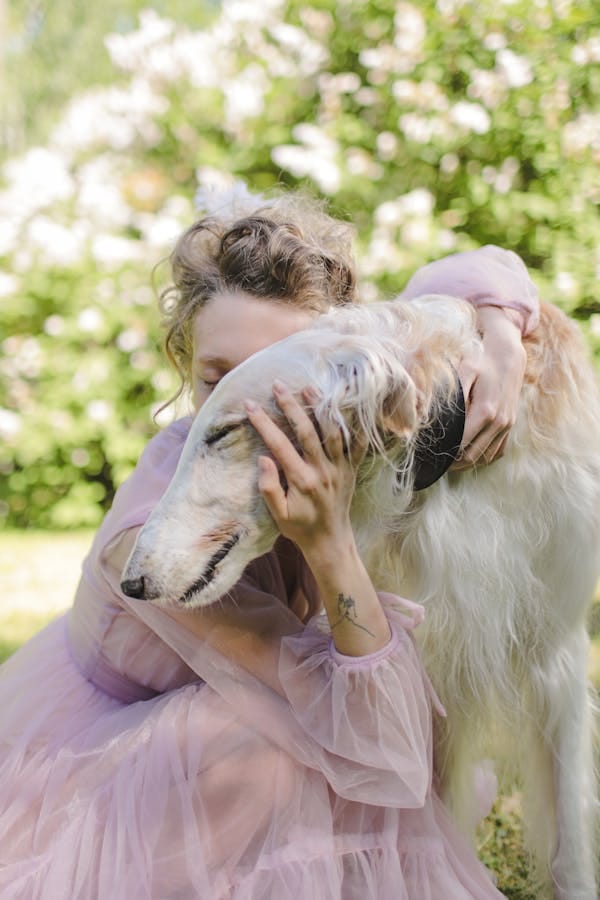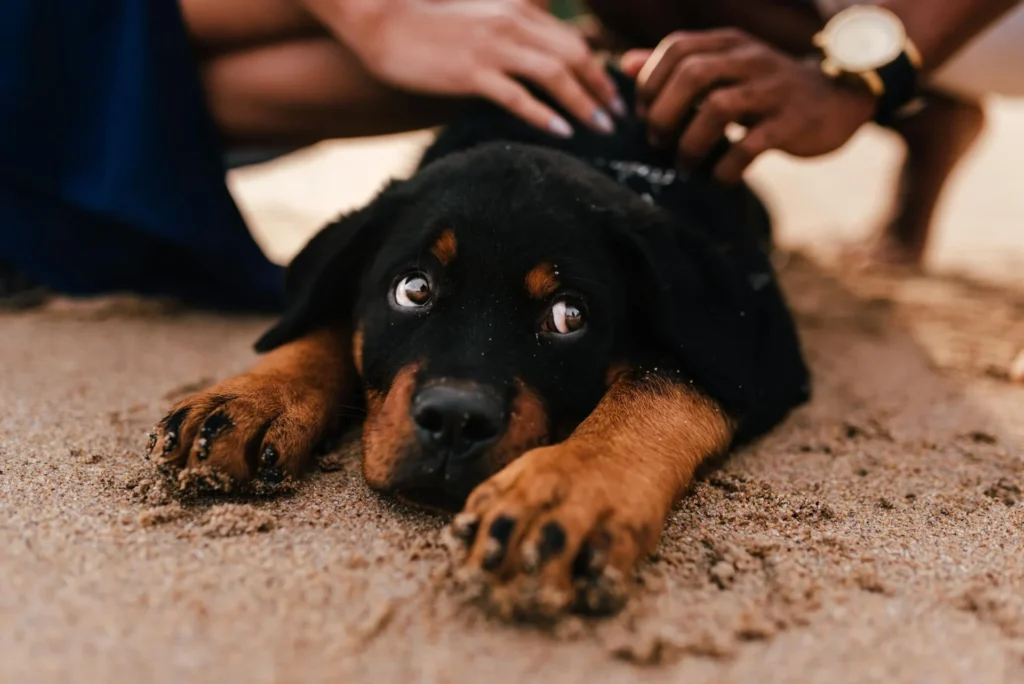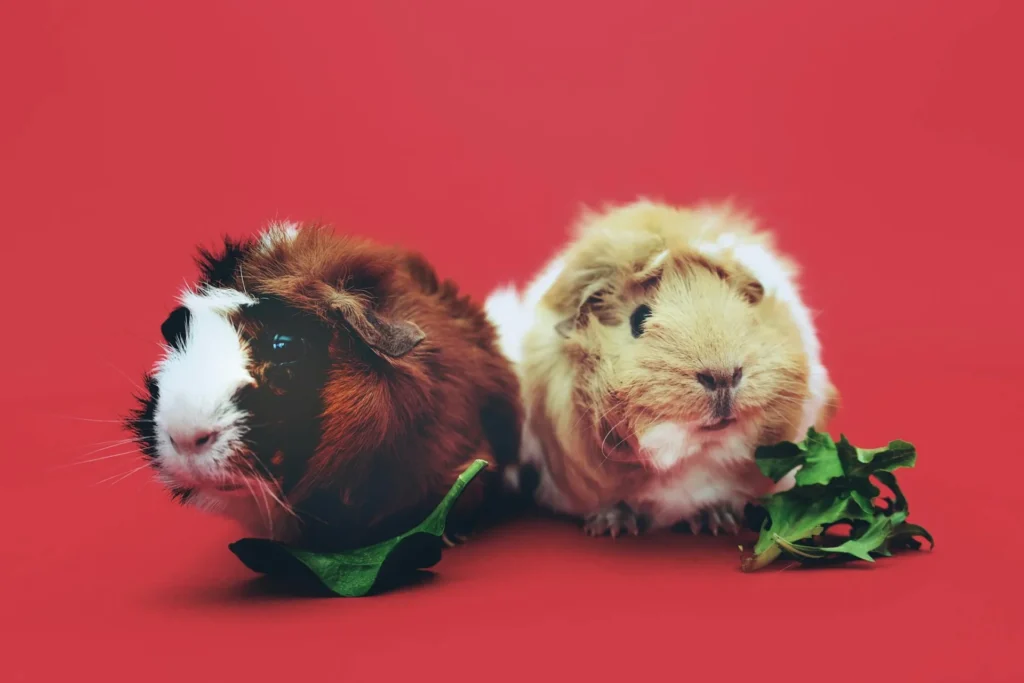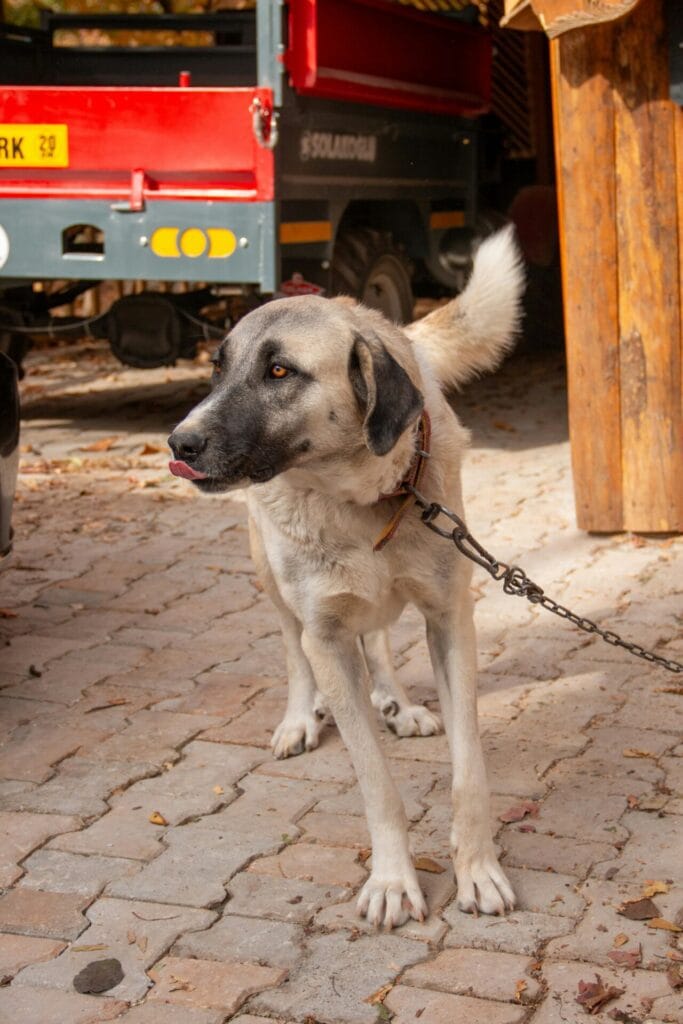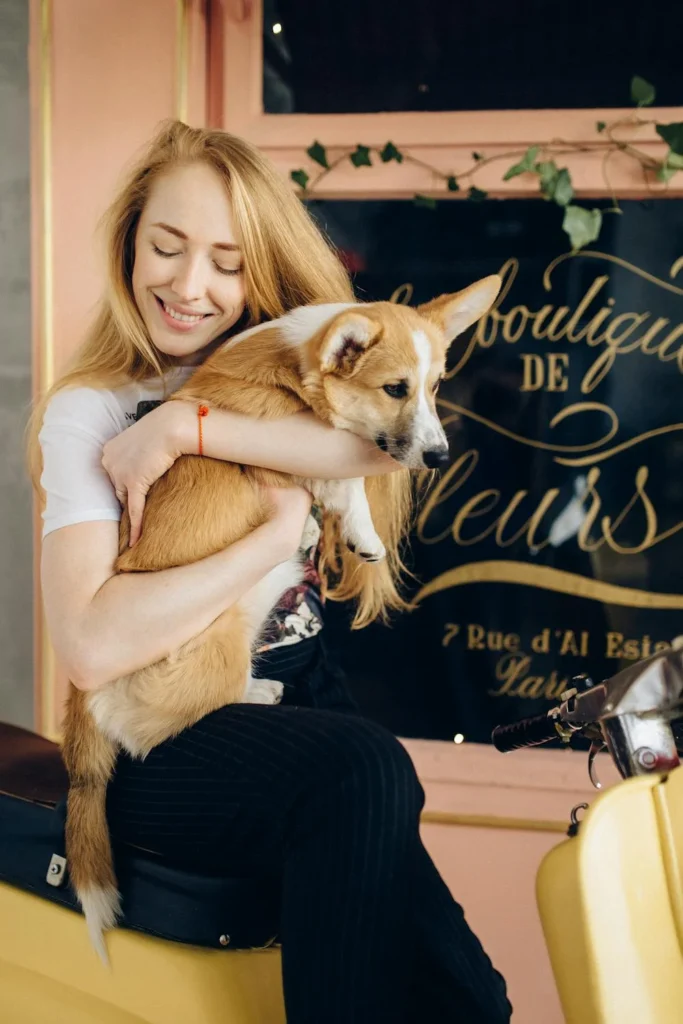- 🔍 Understanding Poodle Bloat: The Basics
- 🚩 Poodle Bloat Symptoms: Recognizing the Signs
- 🔬 Poodle Bloat Causes: Understanding the Risk Factors
- 🛡️ Poodle Bloat Prevention: Strategies to Keep Your Poodle Safe
- 🏠 Poodle Bloat Home Remedies: What You Can (and Can’t) Do
- 💊 Poodle Bloat Cure and Treatment: Medical Interventions
- 🚑 When to Seek Emergency Care: Don’t Wait!
- 📊 Poodle Bloat Statistics: Understanding the Numbers
- 🧬 Genetic Factors in Poodle Bloat: What We Know
- 🍽️ Diet and Poodle Bloat: Making Smart Choices
- 😰 Stress and Poodle Bloat: The Hidden Connection
- 💉 Preventive Surgery: Understanding Gastropexy
- 🌡️ Climate and Poodle Bloat: Is There a Connection?
- 🏋️♀️ Exercise and Poodle Bloat: Finding the Right Balance
- 🧠 Poodle Bloat Awareness: Educating Others
- 🔮 Future of Poodle Bloat Research: What’s on the Horizon?
- ❓ FAQs About Poodle Bloat
- 📚 Conclusion: Empowering Poodle Owners Against Bloat
- 📅 Poodle Bloat Prevention Calendar: A Year-Round Approach
- 🍽️ Poodle-Friendly Feeding Techniques to Prevent Bloat
- 🏥 Bloat First Aid Kit for Poodle Owners
- 🧘♀️ Stress Reduction Techniques for Poodles
- 📊 Poodle Bloat Risk Assessment Tool
- 🌿 Holistic Approaches to Poodle Bloat Prevention
- 🎓 Poodle Bloat Education: Spreading Awareness
- 🔬 Cutting-Edge Research in Poodle Bloat
- 🌈 Living with a Bloat-Prone Poodle: Finding Joy Amidst Caution
- 📝 Final Thoughts: Empowered Poodle Parenting
📚 Introduction: What Every Poodle Owner Needs to Know
Imagine this: You’re enjoying a peaceful evening with your beloved poodle when suddenly, they become restless, trying to vomit but nothing comes up. Their abdomen starts to swell, and you notice they’re having trouble breathing. 😰 These could be the signs of a life-threatening condition known as bloat, or more scientifically, Gastric Dilatation-Volvulus (GDV).
For poodle owners, understanding bloat isn’t just important—it’s crucial. This comprehensive guide will walk you through everything you need to know about poodle bloat, from its causes and symptoms to prevention and treatment. We’ll break down complex veterinary terms into easy-to-understand language, so you can be prepared to act quickly if your furry friend ever faces this emergency. 🏥🐾

Let’s dive in and equip ourselves with the knowledge to keep our poodle companions safe and healthy! 💪
🔍 Understanding Poodle Bloat: The Basics
What is Bloat (GDV)?
Bloat, medically known as Gastric Dilatation-Volvulus (GDV), is a serious and potentially life-threatening condition that can affect dogs, including poodles. It occurs when the stomach fills with gas and twists on itself, cutting off blood supply and causing a cascade of severe health issues. 🌪️💨
Think of it like this: Imagine your poodle’s stomach is a balloon. In bloat, this balloon not only inflates rapidly but also twists around, kinking its opening. This traps the air inside and cuts off circulation to the stomach and other organs. Scary stuff, right? 😱
Why Poodles are at Risk
Poodles, especially Standard Poodles, are among the breeds more susceptible to bloat. Here’s why:
- Deep-chested build: Their body shape allows more room for the stomach to expand and potentially twist.
- Size: Larger dogs are generally more prone to bloat.
- Genetics: Some poodle lines may have a higher predisposition.
- Age: Risk increases as poodles get older.
- Eating habits: Fast eating and large meals can contribute to bloat risk.
🚩 Poodle Bloat Symptoms: Recognizing the Signs
Knowing the symptoms of bloat in poodles can make the difference between life and death. Here are the key signs to watch for:

- 🤢 Unproductive retching or vomiting
- 🎈 Swollen or distended abdomen
- 😰 Rapid, shallow breathing
- 💓 Increased heart rate
- 😵 Weakness or collapse
- 😢 Whining or signs of discomfort
- 🐾 Restlessness or pacing
- 🧊 Cool body temperature
Let’s break this down by poodle variety:
| Poodle Variety | Common Symptoms | Additional Notes |
|---|---|---|
| Standard | All of the above, more pronounced distension | Most at risk due to size |
| Miniature | May show more restlessness, less visible distension | Symptoms can progress quickly |
| Toy | Rapid breathing may be more noticeable, distension harder to see | Smallest variety, but not immune |
Remember, bloat is an emergency. If you suspect your poodle has bloat, seek veterinary care immediately! ⏰🏥
🔬 Poodle Bloat Causes: Understanding the Risk Factors
While the exact cause of bloat isn’t fully understood, several factors can increase the risk:
- 🍽️ Eating habits:
- Eating too quickly
- Consuming large meals
- Eating from elevated food bowls (controversial)
- 💧 Drinking large amounts of water quickly
- 🏃♀️ Exercise immediately before or after meals
- 🧬 Genetic predisposition
- 🎭 Stress or anxiety
- 👴 Age (more common in older dogs)
- 🦴 Body shape (deep-chested breeds like poodles are at higher risk)
- 🥩 Diet (dry kibble diets may increase risk)
Risk Comparison by Breed
Let’s see how poodles stack up against other breeds in terms of bloat risk:
| Breed | Relative Risk | Notes |
|---|---|---|
| Great Dane | Very High | Highest risk among all breeds |
| Standard Poodle | High | One of the high-risk breeds |
| German Shepherd | High | Deep-chested breed |
| Miniature Poodle | Moderate | Less risk than Standard, but still susceptible |
| Toy Poodle | Low to Moderate | Least risk among poodles, but not immune |
| Chihuahua | Low | Small size reduces risk |
🏆 Breeds at Highest Risk:
- Great Dane
- Saint Bernard
- Weimaraner
- Irish Setter
- Standard Poodle
⚠️ Breeds at Lowest Risk:
- Chihuahua
- Pug
- Boston Terrier
- Pomeranian
- Dachshund
🛡️ Poodle Bloat Prevention: Strategies to Keep Your Poodle Safe
Prevention is always better than cure, especially when it comes to a life-threatening condition like bloat. Here are some strategies to reduce the risk:
- 🍽️ Feeding Habits:
- Feed smaller, more frequent meals
- Use slow-feed bowls to prevent rapid eating
- Avoid elevated food bowls (consult your vet)
- 💧 Water Management:
- Provide constant access to fresh water
- Limit water intake immediately after exercise
- 🏃♀️ Exercise:
- Wait at least an hour after meals before exercise
- Avoid vigorous exercise right after eating
- 🥘 Diet:
- Consider moistening dry food
- Include some canned food in the diet
- Avoid foods with high fat content as the first ingredient
- 😌 Stress Reduction:
- Maintain a calm environment
- Use anxiety-reducing techniques if your poodle is prone to stress
- 💉 Preventive Surgery:
- Discuss gastropexy with your vet (a surgery that can prevent stomach twisting)
Prevention Strategies by Poodle Variety
| Poodle Variety | Key Prevention Strategies | Additional Notes |
|---|---|---|
| Standard | All of the above, consider gastropexy | Highest risk, most benefit from prevention |
| Miniature | Focus on slow feeding, stress reduction | Moderate risk, be vigilant |
| Toy | Monitor eating habits, maintain healthy weight | Lower risk, but don’t neglect prevention |
Remember, while these strategies can help reduce the risk, they can’t eliminate it entirely. Always stay observant of your poodle’s behavior and health. 👀
🏠 Poodle Bloat Home Remedies: What You Can (and Can’t) Do
While bloat is a medical emergency that requires immediate veterinary care, there are some things you can do at home while preparing to go to the vet:
- 🚗 Prepare for immediate transport to the vet
- 🧘♀️ Keep your poodle calm and comfortable
- 🌡️ Do not attempt to treat bloat at home
- ❌ Avoid giving any food or water
- 🚫 Don’t give any over-the-counter medications
- 📞 Call the vet to let them know you’re coming
It’s crucial to understand that home remedies are not a substitute for professional veterinary care in cases of bloat. The condition is too severe and progresses too quickly for home treatment to be effective. 🚨
💊 Poodle Bloat Cure and Treatment: Medical Interventions
When it comes to treating bloat, time is of the essence. Here’s what you can expect at the vet:
- 📊 Diagnosis:
- Physical examination
- X-rays to confirm bloat and assess stomach position
- 💉 Stabilization:
- IV fluids to address shock
- Pain management
- Antibiotics to prevent infection
- 🌬️ Decompression:
- Releasing gas from the stomach using a tube or needle
- �手術 Surgery:
- Untwisting the stomach
- Removing any damaged tissue
- Gastropexy to prevent future occurrences
- 🏥 Post-operative care:
- Close monitoring
- Pain management
- Gradual return to eating and activity
Treatment Success Rates
| Treatment Stage | Success Rate | Factors Influencing Success |
|---|---|---|
| Early Intervention | 90-95% | Caught within 2-3 hours of onset |
| Delayed Treatment | 50-70% | 4-6 hours after onset |
| Critical Cases | 10-30% | More than 6 hours or severe complications |
Remember, the earlier bloat is treated, the better the chances of survival and full recovery. 🕰️💖
🚑 When to Seek Emergency Care: Don’t Wait!
In cases of suspected bloat, every minute counts. Here’s when to rush to the emergency vet:
- 🎈 Any sign of abdominal swelling or distension
- 🤢 Repeated unsuccessful attempts to vomit
- 😰 Rapid, shallow breathing or difficulty breathing
- 💓 Weak pulse or rapid heart rate
- 😵 Collapse or inability to stand
- 😢 Signs of severe discomfort or pain
If you notice any of these signs, especially in combination, don’t hesitate – go to the vet immediately! It’s always better to be safe than sorry when it comes to bloat. 🚨🏥
📊 Poodle Bloat Statistics: Understanding the Numbers
Let’s look at some statistics to understand the prevalence and impact of bloat in poodles:
- Poodles are among the top 10 breeds most likely to develop bloat
- Standard Poodles have a 5.7% lifetime risk of developing bloat
- The mortality rate for bloat can be as high as 30-40% even with treatment
- About 25-40% of dogs who have bloat once will experience it again
Bloat Risk by Age in Poodles
| Age Group | Relative Risk | Notes |
|---|---|---|
| 0-2 years | Low | Rare in young poodles |
| 2-5 years | Moderate | Risk begins to increase |
| 5-10 years | High | Peak risk period |
| 10+ years | Very High | Highest risk group |
These statistics underscore the importance of awareness and prevention when it comes to poodle bloat. 📈
🧬 Genetic Factors in Poodle Bloat: What We Know
Recent research has shed light on genetic factors that may influence bloat risk in poodles:
- 🧪 Certain genes may predispose poodles to bloat
- 👪 Dogs with first-degree relatives who have had bloat are at higher risk
- 🔬 Ongoing studies are working to identify specific genetic markers
While we can’t change our poodle’s genetics, understanding these factors can help us be more vigilant with high-risk individuals. 🔍
🍽️ Diet and Poodle Bloat: Making Smart Choices
What you feed your poodle can play a role in bloat risk. Here are some dietary considerations:
- 🥩 Protein source: Some studies suggest that foods with a meat meal as the first ingredient may reduce risk
- 🌾 Grain-free diets: There’s ongoing debate about their impact on bloat risk
- 💧 Moisture content: Moistening dry food or incorporating wet food may help
- 🥕 Fiber: A moderate amount of fiber in the diet may be beneficial
Remember, always consult with your vet before making significant changes to your poodle’s diet. 👨⚕️👩⚕️
😰 Stress and Poodle Bloat: The Hidden Connection
Stress can be a contributing factor to bloat in poodles. Here’s what you need to know:
- 🏠 Changes in routine or environment can increase stress
- 🎭 Anxious personalities may be at higher risk
- 🧘♀️ Stress-reduction techniques (like calming music or pheromone diffusers) may help
Creating a calm, stable environment for your poodle can contribute to overall health and potentially reduce bloat risk. 🏡💆♀️
💉 Preventive Surgery: Understanding Gastropexy
For high-risk poodles, especially Standards, veterinarians may recommend a preventive surgery called gastropexy. Here’s what you need to know:
- 🔪 The surgery involves attaching the stomach to the abdominal wall
- 🛡️ It prevents the stomach from twisting, even if it dilates
- 💰 Cost can be a factor, but it’s often less expensive than emergency bloat treatment
- 🩹 Recovery time is typically 10-14 days
| Gastropexy Type | Pros | Cons |
|---|---|---|
| Prophylactic (during spay/neuter) | Less invasive, lower cost | Only option during puppyhood |
| Laparoscopic | Minimally invasive, quicker recovery | May be more expensive |
| Traditional open surgery | Can be done at any time | More invasive, longer recovery |
Discuss with your vet whether gastropexy might be right for your poodle. 🗨️
🌡️ Climate and Poodle Bloat: Is There a Connection?
Some studies suggest a potential link between weather conditions and bloat risk:
- 🌬️ Higher risk during colder months
- 🌪️ Possible correlation with rapid barometric pressure changes
- 🌡️ No clear link with extreme heat, but dehydration can be a risk factor
While we can’t control the weather, being aware of these potential factors can help us be extra vigilant during high-risk periods. ☁️🌞
🏋️♀️ Exercise and Poodle Bloat: Finding the Right Balance
Exercise is crucial for your poodle’s health, but it’s important to balance it with bloat prevention:
- ⏰ Wait at least an hour after meals before exercising
- 🚶♀️ Opt for moderate, consistent exercise rather than intense bursts
- 💧 Ensure access to water, but limit large amounts immediately after exercise
Remember, a tired poodle is often a happy poodle, but safe exercise practices are key! 🐾
🧠 Poodle Bloat Awareness: Educating Others
As a poodle owner, you can play a role in spreading awareness about bloat:
- 🗣️ Share information with other dog owners
- 📱 Use social media to spread awareness (#PoodleBloatAwareness)
- 🎨 Create infographics or posters for local vet offices or dog parks
- 👥 Organize community workshops or seminars
Together, we can help more poodle owners understand and prevent this dangerous condition. 💪
🔮 Future of Poodle Bloat Research: What’s on the Horizon?
Exciting developments are underway in the field of bloat research:
- 🧬 Genetic studies to identify at-risk individuals
- 💊 Development of new preventive medications
- 🤖 AI-powered early detection systems
- 🥼 Improved surgical techniques for treatment
Stay tuned to reputable veterinary news sources for the latest developments! 📰
❓ FAQs About Poodle Bloat
Q: Can small poodles get bloat too?
A: Yes, while less common, Miniature and Toy Poodles can also develop bloat. It’s important to be aware of the signs regardless of your poodle’s size.
Q: Is bloat painful for poodles?
A: Yes, bloat can be extremely painful and distressing for poodles. It’s one of the reasons why immediate veterinary care is crucial.
Q: How quickly does bloat progress in poodles?
A: Bloat can progress very rapidly, often within hours. This is why it’s considered a medical emergency requiring immediate attention.
Q: Can bloat in poodles be cured without surgery?
A: In very early stages, bloat might be treated without surgery. However, in most cases, especially if the stomach has twisted, surgery is necessary to save the dog’s life.
Q: Are male poodles more prone to bloat than females?
A: Some studies suggest that male dogs may be slightly more at risk for bloat, but the difference is not significant. Both male and female poodles can develop bloat.
Q: Can a poodle eat normally after recovering from bloat?
A: After recovery, most poodles can return to normal eating habits. However, your vet may recommend dietary changes to help prevent future episodes.
📚 Conclusion: Empowering Poodle Owners Against Bloat
As we wrap up this comprehensive guide to poodle bloat, let’s recap the key points:
- 🚨 Bloat is a life-threatening emergency that requires immediate veterinary care.
- 🔍 Recognizing the signs early can make a crucial difference in outcome.
- 🛡️ Prevention strategies, including proper feeding habits and stress reduction, can help reduce risk.
- 💉 For high-risk poodles, preventive surgery (gastropexy) may be worth considering.
- 🧬 Ongoing research continues to improve our understanding and treatment of bloat.
Remember, knowledge is power when it comes to protecting our beloved poodles. By understanding bloat, its risks, and prevention strategies, you’re taking a crucial step in ensuring a long, healthy life for your furry friend. 🐩💖
Stay vigilant, but don’t let fear of bloat overshadow the joy of poodle ownership. With proper care and awareness, you can minimize the risk and maximize the happy moments with your poodle companion.
Here’s to many healthy, bloat-free years with your poodle! 🎉🐾
📅 Poodle Bloat Prevention Calendar: A Year-Round Approach
Maintaining a year-round strategy can help reduce the risk of bloat in your poodle. Here’s a monthly guide:
| Month | Focus Area | Action Items |
|---|---|---|
| January | New Year Health Check | Schedule annual vet visit, discuss bloat risk |
| February | Diet Review | Evaluate and adjust feeding routine if needed |
| March | Exercise Planning | Plan safe exercise routines for spring |
| April | Stress Management | Implement stress-reduction techniques |
| May | Warm Weather Prep | Review hydration strategies for summer |
| June | Travel Safety | Plan for safe feeding during summer travels |
| July | Heat Management | Monitor for heat stress, which can exacerbate bloat risk |
| August | Dietary Supplements | Discuss potential beneficial supplements with vet |
| September | Fall Health Check | Schedule mid-year health check-up |
| October | Cold Weather Prep | Adjust exercise and feeding for cooler weather |
| November | Family Education | Teach family members about bloat signs and prevention |
| December | Year-End Review | Reflect on the year’s health strategies, plan for next year |
🍽️ Poodle-Friendly Feeding Techniques to Prevent Bloat
Proper feeding techniques can play a crucial role in reducing bloat risk. Here are some poodle-friendly feeding strategies:
- 🐌 Slow-Feed Bowls: These specially designed bowls have obstacles that make it harder for your poodle to gulp down food quickly.
- 🧠 Puzzle Feeders: These toys dispense food slowly while providing mental stimulation.
- 🖐️ Hand Feeding: For some poodles, especially those prone to anxiety, hand feeding can slow eating and reduce stress.
- 🍽️ Plate Feeding: Using a flat plate instead of a bowl can naturally slow down eating.
- ⏰ Timed Feeders: Automatic feeders can dispense small amounts of food throughout the day.
Remember, the goal is to slow down eating and prevent your poodle from swallowing excessive air along with their food. 🐾
🏥 Bloat First Aid Kit for Poodle Owners
While professional veterinary care is always necessary for bloat, having a first aid kit ready can help you feel prepared and potentially assist in the early stages of an emergency. Here’s what to include:
- 📞 Emergency vet contact information
- 🚗 Directions to the nearest 24-hour veterinary hospital
- 🧴 Gas-X (simethicone) – can help reduce gas in very early stages (use only under vet guidance)
- 🩺 Stethoscope – to check heart rate
- 🌡️ Thermometer
- 🧊 Cold packs – to help with potential shock
- 🛏️ Small blanket or towel for transport
- 📝 Bloat symptom checklist for quick reference
Remember, this kit is not a substitute for veterinary care but can help you be prepared while seeking professional help. 🚑
🧘♀️ Stress Reduction Techniques for Poodles
Since stress can be a contributing factor to bloat, implementing stress-reduction techniques can be beneficial:
- 🎵 Calming Music: Specially designed dog music can help soothe anxiety.
- 👃 Aromatherapy: Certain scents like lavender can have a calming effect (always ensure it’s safe for dogs).
- 🐾 Regular Exercise: Consistent, moderate exercise can help reduce overall stress levels.
- 🤗 Massage: Gentle massage can help relax your poodle.
- 🏠 Safe Space: Provide a quiet, comfortable area where your poodle can retreat when feeling stressed.
- 🎭 Behavior Modification: Work with a professional to address specific anxiety triggers.
Remember, a calm poodle is often a healthier poodle! 😌
📊 Poodle Bloat Risk Assessment Tool
Use this simple risk assessment tool to evaluate your poodle’s bloat risk:
| Risk Factor | Points |
|---|---|
| Standard Poodle | 3 |
| Miniature Poodle | 2 |
| Toy Poodle | 1 |
| Age over 5 years | 2 |
| Male | 1 |
| Eats one large meal per day | 2 |
| Eats rapidly | 2 |
| Has a first-degree relative who had bloat | 3 |
| Anxious/fearful temperament | 2 |
| Underweight or overweight | 1 |
Scoring:
- 0-5 points: Lower risk
- 6-10 points: Moderate risk
- 11+ points: Higher risk
Remember, this is a general guide. Always consult with your veterinarian for a comprehensive risk assessment. 👨⚕️👩⚕️
🌿 Holistic Approaches to Poodle Bloat Prevention
While traditional veterinary care is crucial, some poodle owners also incorporate holistic approaches to support overall health and potentially reduce bloat risk:
- 🍃 Herbal Supplements: Some herbs like slippery elm or fennel may support digestive health (always consult a vet before use).
- 🧘♀️ Acupuncture: May help with overall stress reduction and digestive balance.
- 🥗 Whole Food Diets: Some owners opt for carefully balanced home-cooked or raw diets.
- 🦴 Bone Broth: Can be soothing for the digestive system when used appropriately.
- 🌸 Flower Essences: May help with emotional balance in anxious poodles.
Remember, these approaches should complement, not replace, regular veterinary care and proven preventive strategies. 🏥+🌿
🎓 Poodle Bloat Education: Spreading Awareness
Education is key in preventing and managing poodle bloat. Here are some ways to spread awareness:
- 🐕 Dog Park Talks: Share information with other dog owners during walks or park visits.
- 📱 Social Media Campaigns: Use platforms like Instagram or TikTok to share quick, informative videos about bloat.
- 🏫 Local Dog Training Classes: Offer to give a short presentation on bloat awareness at dog training facilities.
- 📰 Community Newsletters: Write an article for your local community or breed club newsletter.
- 🎨 Infographic Creation: Design easy-to-understand infographics about bloat symptoms and prevention.
- 👥 Support Groups: Start or join a support group for owners of bloat-prone breeds.
Remember, the more people know about bloat, the more poodles we can potentially save! 💖🐩
🔬 Cutting-Edge Research in Poodle Bloat
Exciting developments are happening in the field of bloat research. Here are some areas to watch:
- 🧬 Genetic Markers: Scientists are working to identify specific genes that may predispose dogs to bloat.
- 🦠 Microbiome Studies: Research is exploring how gut bacteria might influence bloat risk.
- 🤖 AI-Powered Monitoring: Development of smart collars that can detect early signs of bloat.
- 💊 New Preventive Medications: Researchers are exploring drugs that might reduce bloat risk.
- 🩺 Advanced Diagnostic Tools: Work on faster, more accurate ways to diagnose bloat in emergency situations.
Stay tuned to reputable veterinary news sources for updates on these promising areas of research! 📰
🌈 Living with a Bloat-Prone Poodle: Finding Joy Amidst Caution
While being aware of bloat risk is important, it shouldn’t overshadow the joy of poodle ownership. Here are some ways to balance caution with enjoyment:
- 🎉 Celebrate small moments: Every day with your poodle is a gift.
- 📸 Create memories: Take lots of photos and videos of your poodle.
- 🏞️ Explore safely: Find new, safe adventures to enjoy together.
- 🧠 Mental stimulation: Engage in training and puzzle games for bonding and mental health.
- 💕 Show love: Regular grooming and cuddle sessions strengthen your bond.
Remember, a well-cared-for poodle is a happy poodle, bloat risk or not! 😊🐩
📝 Final Thoughts: Empowered Poodle Parenting
As we conclude this comprehensive guide to poodle bloat, remember that knowledge is your most powerful tool. By understanding the risks, recognizing the signs, and implementing preventive strategies, you’re taking crucial steps to protect your beloved poodle.
Bloat is a serious condition, but it doesn’t define your relationship with your poodle. Focus on providing a loving, healthy environment, and enjoy every moment with your furry friend. With awareness and proper care, you can minimize the risk of bloat and maximize the joyful moments that make poodle ownership so rewarding.
Here’s to many happy, healthy years with your poodle companion! 🎉🐩💖

